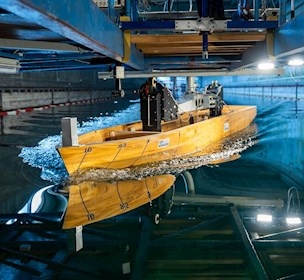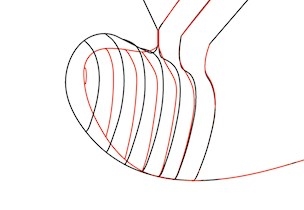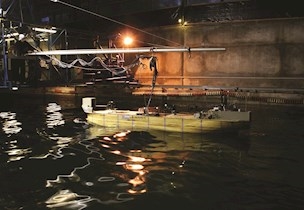Detailed flow studies for the design and modification of ships and offshore structures
Detailed flow studies may be used in the early phase of a vessel project or in connection with modifications of an existing vessel.
We use RANS-based CFD because of its ability to calculate hydrodynamic loads on marine structures, detailed flow field information in specific regions of the flow domain and motions originating from the interaction of the structures with the water.
Hydrodynamic studies
This information gives valuable insight into hydrodynamic characteristics of ships and offshore structures and is very helpful for the designer or engineer in the design phase.
Furthermore, it is useful in connection with solution of in-service problems occurring after the ship or offshore structure is built and put into operation.
Examples of such studies are:
- investigation of the influence of vortex generators on propeller inflow and performance
- influence of propeller diameter on pressure pulses on the hull above the propeller
- investigation of performance of different propulsion systems behind a given ship
- added resistance due to drag from appendages
- alignment of thrusters and brackets, struts or other appendages
- detection of possible sources of vibration arising from appendages
- lift and drag on rudders or stabilisation fins
- evaluation of cooling boxes
- evaluation of flow guides
CFD can often be beneficial in connection with complex hydrodynamic problems which seem either impossible or too expensive to solve by traditional experimental methods.





